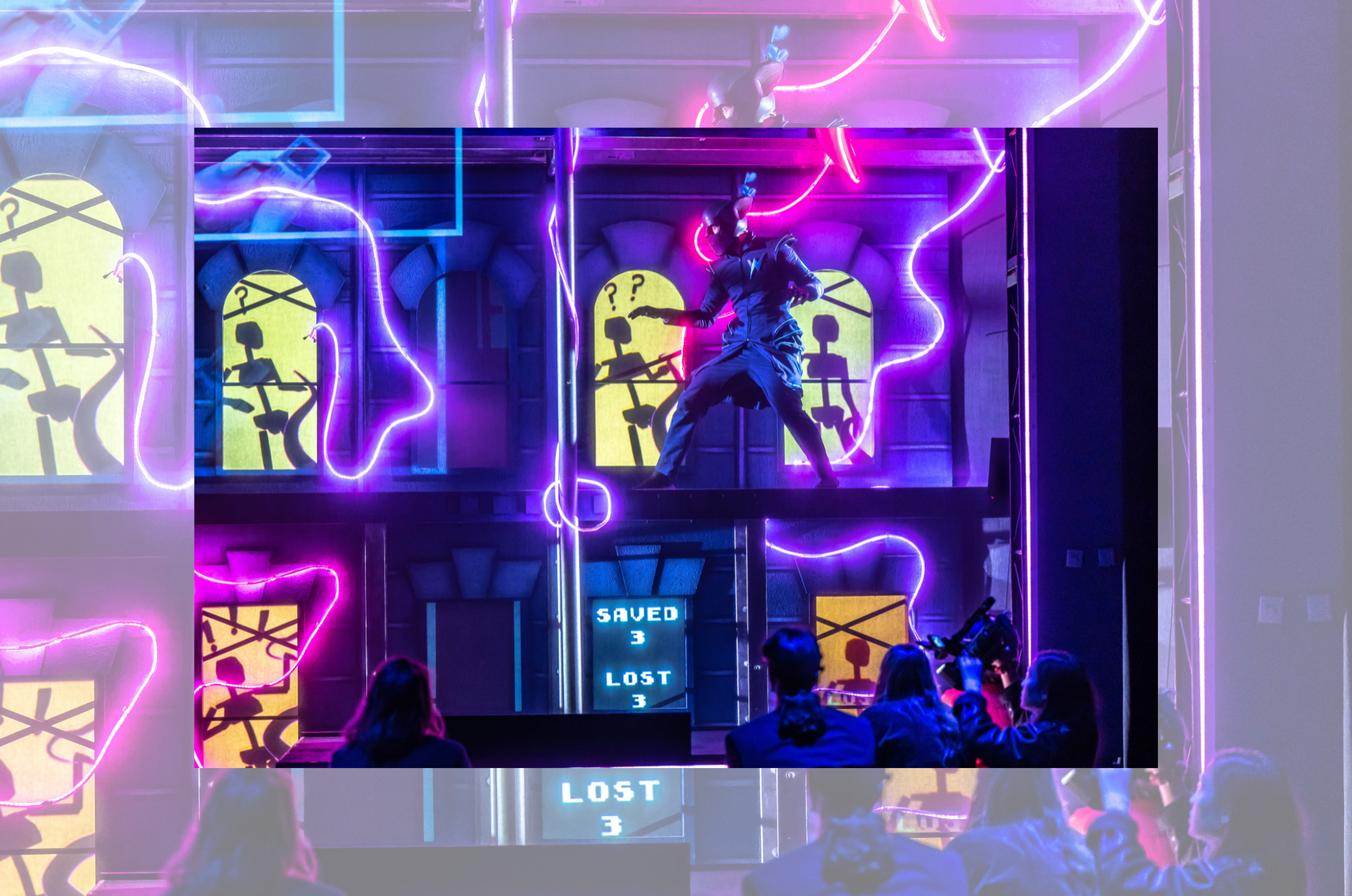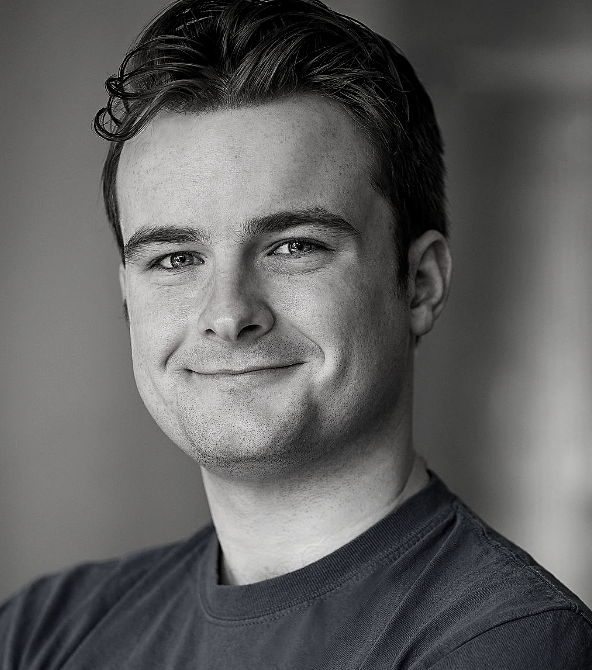REVIEW: No Save Points at Outside the March/Starvox Entertainment/Modern Times Stage Company
Outside the March loves a challenge. In the immersive theatre company’s last in-person production, Trojan Girls & The Outhouse of Atreus, one cast simultaneously performed two plays for different crowds. Director Mitchell Cushman embraced the near-impossibility of that task by instructing audiences to chant countdowns whenever an actor missed an entrance, transmuting imperfection into a source of communal excitement.
The company’s new one-man play No Save Points, co-directed by Cushman and creator-performer Sébastien Heins, has a similarly adventurous concept. At four junctures in the show, Heins turns his body into a video game that is playable by members of the audience. As they press buttons on a controller disguised as a GameBoy, electric currents are sent to pads attached to Heins’ torso. These impulses tell him how to move, speak, and interact with the world around him. Responding to these unpredictable button presses is no doubt highly challenging, but seeing Heins struggle — and more or less succeed — at keeping up with them is exactly the fun of the show. For both audience and actor, No Save Points is a gloriously playful theatrical event.
Although it’s being performed in a room at Lighthouse ArtSpace Toronto, home of the unabashedly corporate Immersive Disney Animation art gallery, No Save Points doesn’t feel commercial. This is because it’s a memoir show at heart: between the games, Heins tells the audience about his mother’s experience with Huntington’s disease (HD), an incurable brain disorder that has a 50 percent chance of passing down from parent to child. The narrative spans many years, from before Heins knew his mother had HD to the day he got tested for it and beyond.
There’s plenty of dramaturgical justification for the games’ interruption of the story. Heins says that when he was younger he played them so he could shut out the real world; it follows that they are the audience’s escape from grappling with the high-stakes narrative.
But the games are more than a distraction — the very act of controlling Heins’ body is richly metaphorical. One of HD’s most well-known effects is the deterioration of bodily control, making Heins’ retreat into the mechanized predictability of video game movements — up, down, left, right, jump, punch, enter pipe — a defiant reclamation of power. At the same time, because he gives the audience a degree of agency over his movements, it’s also a symbolic relinquishment of control.
Projection designer Laura Warren highlights this duality in a potent scene that messes with the show’s established theatrical rules. After performing the third game of the evening, Heins goes back to his narration. But instead of keeping the electric sensors hidden beneath his shirt (designed by Niloufar Ziaee), he takes them off and leaves them hanging from his body. Behind Heins, Warren then projects a computer-generated humanoid model whose movements seem to mirror the unstable dangling of the pads. As they swing about the air, the figure contorts erratically. The video game world has merged with the real one, and the realm that was once Heins’ escape now reflects his family’s battle with HD.
If I haven’t yet described the gameplay in much detail, it’s only because not all the games work the same way. The two in act one are played by four audience members sitting on a sofa that looks like a GameBoy (designed by Anahita Dehbonehie), while the second act’s allow the rest of the audience to play.
The games — each co-created with a different artist (Damien Atkins, Rouvan Silogix, Aylwin Lo, and Kemi King) — are also visually distinct. As Heins’ story moves forward, the technology advances: the first is entirely analogue; the second combines projections and a complex set for a look that invokes games of the 1990s; the third, entirely projected, resembles a mid-2010s indie offering; and the final seems to riff on Virtual Reality. This mix of approaches offers compelling texture and makes the show feel like an invigorating prototype for future playable shows rather than a totally polished final product.
I found the third game most effective because it has a clear path to victory: get to the end of the screen (a sidescroller, in other words). This clear goal lets the audience share excitement and frustration. A couple of the other games are closer to an RPG, and involve choosing from a set of options, which doesn’t have the same high-stakes drama as jumping over a pit of death. The show also tests different ways of controlling Heins — communal clapping, the holding up of signs — but because these don’t feel as concrete as button pressing, it’s hard to believe they affect the game much.
Heins’ skillful performance demonstrates impressive range. In the game worlds, he jumps from character to character with clearly defined physical shifts. For the narrative sections, however, his voice and body are unrelentingly casual. These contrasts support the show’s constant formal mutations and lend it a surprising amount of momentum.
Though No Save Points makes use of new technologies, it’s more theatrical than many analogue-first shows. Outside the March’s usual dynamism has fused with all the backseat gaming fun of a Twitch stream to create an experience that’s both strikingly new and surprisingly tender. Press A to start.
No Save Points runs through July 2 at the Lighthouse ArtSpace. Tickets are available here.
Intermission reviews are independent and unrelated to Intermission’s partnered content. Learn more about Intermission’s partnership model here.













Comments